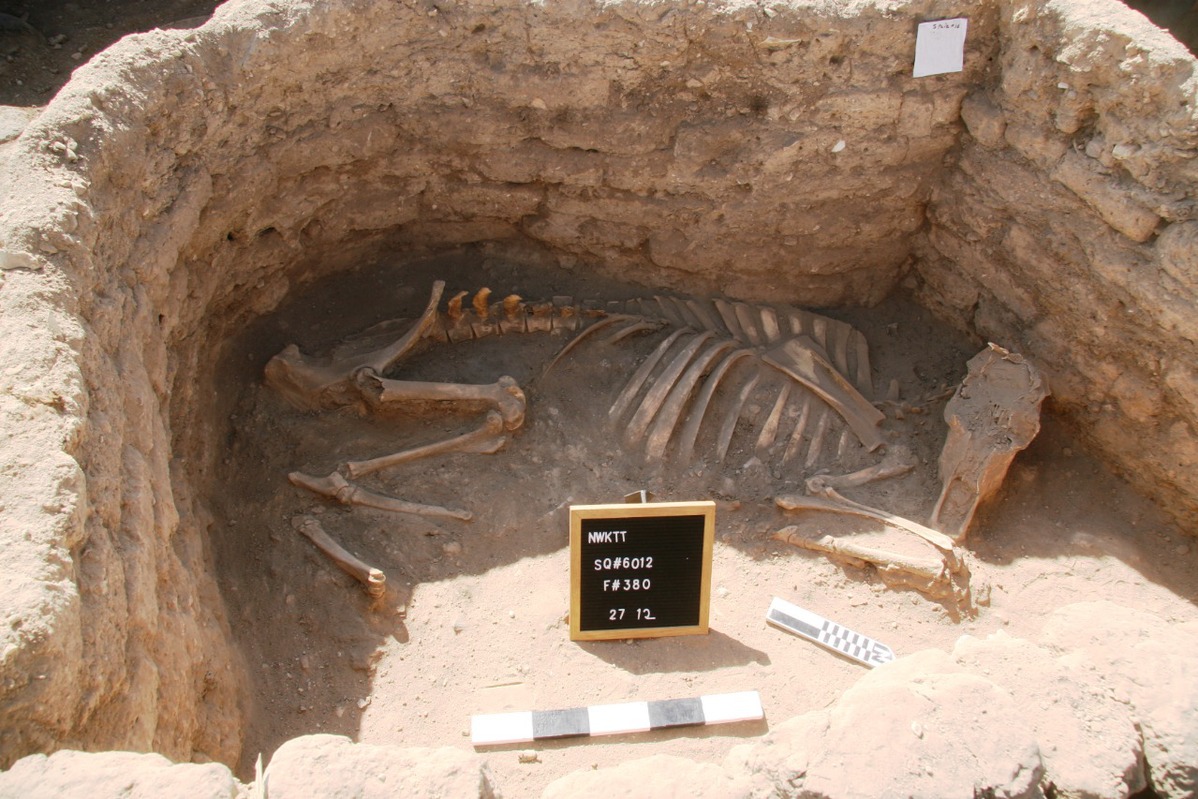Egypt uncovers 'lost golden city' buried under sands
XINHUA | Updated: 2021-04-10 08:40

CAIRO-Archaeologists have uncovered the remains of an ancient city in the desert outside Luxor they say is the "largest" ever found in Egypt and dates back to a golden age of the pharaohs 3,000 years ago.
Famed Egyptologist Zahi Hawass announced the discovery of the "lost golden city", saying the site was uncovered near Luxor, home of the legendary Valley of the Kings.
"The Egyptian mission under Dr Zahi Hawass found the city that was lost under the sands," the excavation team said in a statement on Thursday.
"The city is 3,000 years old, dates to the reign of Amenhotep III, and continued to be used by Tutankhamun and Ay."
They called the find "the largest" ancient city ever uncovered in Egypt.
Betsy Bryan, professor of Egyptian art and archaeology at Johns Hopkins University, said the find was the "second most important archaeological discovery since the tomb of Tutankhamen" nearly a century ago, the team's statement said.
Items of jewelry have been unearthed, along with colored pottery vessels, scarab beetle amulets and mud bricks bearing seals of Amenhotep III.
"Many foreign missions searched for this city and never found it," said Hawass, a former antiquities minister.
The team began excavations in September 2020, between the temples of Ramses III and Amenhotep III near Luxor, nearly 500 kilometers south of Cairo.
"Within weeks, to the team's great surprise, formations of mud bricks began to appear in all directions," the statement said.
"What they unearthed was the site of a large city in a good condition of preservation, with almost complete walls, and with rooms filled with tools of daily life."
Bryan said the city "will give us a rare glimpse into the life of the ancient Egyptians at the time where the empire was at his wealthiest".
After years of political instability following the "Arab Spring" unrest in 2011, which dealt a severe blow to Egypt's tourism industry, the country is seeking to bring back visitors, in particular by promoting its ancient heritage.
Last week, Egypt transported the mummified remains of 18 ancient kings and four queens across Cairo from the iconic Egyptian Museum to the new National Museum of Egyptian Civilisation in a procession dubbed the "Pharaohs' Golden Parade".
Among the 22 bodies were those of Amenhotep III and his wife Queen Tiye.
























